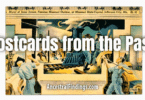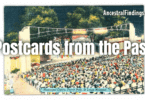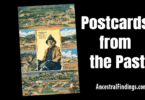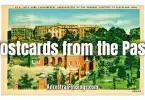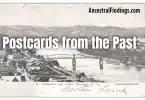I remember watching Snow White and the Seven Dwarfs on VHS with my parents when I was very young. That memory is still fresh. The soft hum of the tape rewinding, the old Disney clamshell case with the artwork, and the joy of seeing the dwarfs move across the screen—it all left a mark. This postcard brings that moment rushing back, showing one of the most cheerful and well-loved scenes in the movie: Snow White dancing while the dwarfs play music around her.
Even today, it’s easy to recognize the details. You can see the wooden cottage, the carved furniture, and the happy expressions on the characters. Dopey is front and center, his oversized sleeves dangling while he claps. Grumpy is off to the side, reluctant as always but still involved. Each dwarf has their place, and you can almost hear the music just by looking at the image. That was the magic of the original movie—every scene was filled with color, personality, and life.
A First in Animation History
The movie came out in 1937, and it changed everything. It was the first full-length animated feature made in the United States. Before that, cartoons were short and shown before feature films in theaters. Walt Disney took a major chance making Snow White. Most people in the movie industry thought it would fail. Animating something that long, with full color and sound, was a huge undertaking—and expensive. But Walt believed in it.
And it worked. The film premiered at the Carthay Circle Theatre in Los Angeles in December 1937 and became a massive hit. Audiences were amazed. Critics were too. No one had ever seen anything like it. It was more than a cartoon—it was a real movie with emotion, characters you cared about, and a complete story from beginning to end. The success of Snow White made it possible for Disney to build the company we know today. Without this movie, there may have been no Cinderella, Sleeping Beauty, or even Disneyland.
Craftsmanship in Every Frame
The scene in this postcard is a good example of how much effort went into each part of the movie. The animators spent years developing the characters. They gave each dwarf a unique personality. Happy was always smiling. Bashful looked away when spoken to. Grumpy folded his arms and frowned—but he still showed he cared. Dopey didn’t speak, but he was always doing something funny. These traits weren’t accidental. Disney’s team studied movement and facial expressions, and they acted out the scenes themselves to see how the characters should move.
Snow White herself was one of the hardest characters to animate. The artists wanted her to look realistic, not overly cartoony. They used a live-action model, Marge Belcher (who later became Marge Champion), to act out her movements. Animators then studied the footage and used it to draw Snow White frame by frame. This made her movements smooth and lifelike, something people hadn’t seen in an animated film before.
A Calmer Moment in a Troubled Time
This scene, with music and dancing, offered a break in the story. Snow White had just fled through a dark forest and found a safe place to rest. The dwarfs welcomed her into their home, and this scene was about sharing joy and comfort. During the time the movie was released, the world was still struggling with the effects of the Great Depression. Families were looking for reasons to smile. This kind of entertainment brought people into theaters and gave them something they could enjoy together.
A lot of people don’t realize how much this movie meant to people at the time. It wasn’t just for children. Adults went to see it and were moved by it. In fact, it’s been said that some grown men in the audience were brought to tears when Snow White ate the poisoned apple. The animation was that effective—and the storytelling was that strong.
A Family Memory That Stuck
When I look at this postcard now, I don’t just see an old Disney image. I see part of my childhood. I remember the carpeted floor, the soft whir of the VCR, and sitting between my parents as we watched this movie together. It wasn’t just a cartoon night—it was a family memory that stuck with me. That’s why this particular postcard means something. It holds a snapshot of that moment in my life, not just a frame from a movie.
Even today, I haven’t watched the newest live-action version of Snow White. I’ve seen some previews, and I know it’s different. They’ve changed the characters, changed the tone, and updated the storyline. That’s fine for today’s audiences, but I’m not sure it would feel the same. What I remember is the classic version. The hand-drawn artwork. The singing. The simple story about kindness, jealousy, and friendship. That version feels more personal to me.
Why This Postcard Belongs in the Collection
I collect postcards like this one because they do more than show a location or promote a place. They often preserve art, culture, and memory in a way that’s easy to hold onto. This postcard was part of the Disney Studios art merchandise, and it’s a great example of how animation artwork was shared and appreciated outside the theater.
It’s also a reminder of where animation started. We see so much digital work today, and while there’s a lot of beauty in modern animation, there’s a different kind of charm in hand-painted backgrounds and cel animation. The original Snow White was built frame by frame by people who worked with pencils, brushes, and paint.
This postcard is small, but it holds a lot of history, both from the movie itself and from my own life. If you have a postcard you’d like to share with me, head over to the contact page at AncestralFindings.com and let me know. I’ll be glad to share my mailing address with you. Who knows—your postcard might be featured in an upcoming Postcards from the Past.


